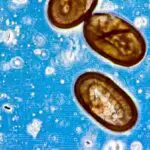What Are Fleas Purpose?
Fleas are parasites that transmit diseases to people and animals. They carry bacterial, viral, and rickettsial diseases. Infestations with fleas can cause serious harm, and the bites of a flea can lead to death. Fleas also carry internal nematode worms.
Some species of fleas are able to live for many months without a host. For example, a flea can live for nine months in freezing temperatures. The purpose of fleas as parasites in humans is not known. However, they are a nuisance and cause allergic reactions in humans.
Fleas reproduce by laying eggs. The eggs are whitish, smooth, and ovular. Adult fleas lay between two and 14 eggs after each blood meal. During their lifetime, they can lay up to 800 eggs. The eggs are usually dropped on the skin or hair of their host. The adult flea feeds frequently, often several times a day.
Fleas have a complex life cycle. They go through an egg, larva, pupa, and adult. The adult flea is a parasitic insect and can transmit many diseases, including rickettsial and bacterial diseases. They can also transmit helminths and viral diseases. Veterinary professionals can find information about the various stages of flea life in books, monographs, and journals.
Adult fleas are small flat insects with wingless bodies that are one-eighth of an inch long. They are dark red-brown in color and have biting mouthparts. Fleas can be easily found by using a flea-comb or wetting the animal’s coat. They feed on the skin of any warm-blooded animal, although they prefer animals with hair.







